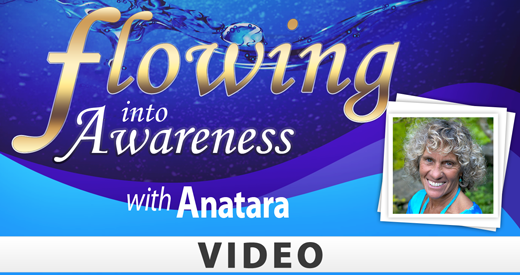POP YOGA by Eric Shaw
Reprise for an Ancient Art: “Have some Pop Yoga with that Cafe au Lait?”
Yoga has always been friends with “The New.” Eighty-five years ago, a 34-year-old Sanskrit scholar named Turmalai Krishnamacarya came out of a cave in Tibet and popularized an athletic spiritual practice known as Hatha Yoga. To make it appealing, he integrated Hatha with Indian wrestling moves and British garrison training. “Old K” as I’ll call Krishnamacarya with a loooooooong bow, was just another innovator in a tradition whose very pith was adaptability to circumstance. His big-time students (and now-veritable Rock Stars) B. K. S. Iyengar and K. Pattabhi Jois created new yoga, too.
These new yogas are “Pop Yogas.” Adjusting to the age, they’re as hip as the Prius, pre-frayed jeans or YouTube. Iyengar and Jois are just part of a new-making trend that belongs to today’s common man (or common woman, as the case may be.)
The yoga systems of Iyengar and Jois weren’t carved on the tablets of Moses like many people think. Both men, like Old K, were discoverers and innovators. B. K. S. Iyengar made the world’s most popular yoga through constant exploration. He’s a Horatio Alger, George Washington Carver-style rags-to-riches Indian genius. He spent just little parts of 3 years studying with Old K before leaving him to do yoga 10 hours daily for the next gazillion years. (After 25 years, he published the modern “Bible” of the art, Light on Yoga—and changed the yoga planet).
Though Indians had sat still in meditation, Iyengar created a complex unmoving style. He decided that moving yoga had “ill effects” and kept yogis from “going deep.” Old K’s other Rock Star student, K. Pattabhi Jois, stuck to a systematized yoga form that really moves (“Ashtanga”), claiming its origins came from an ancient book he found in a Calcutta library. But Iyengar, who lived with Old K and Jois back then, said no Calcutta visit ever happened. Many scholars believe the Yoga Korunta is a fiction and that Jois made Ashtanga up mostly by himself. Either way, Jois should get credit for making another Great Path to the Inner Heat.
Every art and science—even those claiming divine authorship!–are held hostage by differing needs in differing eras. Jois and Iyengar offer just two stories, but more examples appear on our cultural radar everyday . . .
Listen! You can put a yoga together in a garage with your pals—like Sid Vicious and Johnny Rotten—all pluck and ambition and skimpy training, or you can compose it like Tori Amos, working from fundamentals learned at age three–interweaving technique from the Best Teachers in The World. Whatever your yoga, its success depends on the nerves you hit with the forms you make in the culture you live in—and knowing the old, old yoga tradition ain’t necessarily what makes that so. Like music, yoga has fundamentals, but—like music—it also finds life in new forms.
Successful yoga teachers recognize the new voices of their age. Yoga aims and principles aren’t held in check by a Trikonasana Tribunal, so it will always grow wild. Tantra scholar Douglas Brooks says, “Yoga will transform, as it always has, to accommodate innovations . . . and to suit the needs of those who lay claim to its many legacies.” Indian texts show a 2000-year debate about this legacy. The debate continues (you are reading it now) Meanwhile, the great Iyengar instructor Tony Briggs reminds us that: “The outer form is not the inner form.”
Yoga’s shapeshifting isn’t contained by a trademark (Bikram Yoga’s pose-sequence copyright notwithstanding). Anyone practicing yoga in different styles, knows its breadth. Trusting this, living yogis use dance, fighting arts, medicine, massage, acrobatics, philosophy, music, contact improv, hypnotism, weight-training, and physical therapy to re-engineer Pop Yoga. Yoga’s locus is the body and there are dangers in its reckless application there. But the body is a wise and worthy ground for experiment. In the old days, Hatha Yoga was only for “heroes” (viras) and yoga is dangerous. If you do it wrong, the old texts say, it might kill you. I think we intuit this. Yoga promises sweat and softness but also youth-enhancing, death-defying danger.
But Pop Yoga isn’t just sweet surrender and sweat equity. It has a public as well as a private side. In the final analysis, Pop Yoga is a deceptively soft art because it wants to save the world.
Like Rock and Roll, Modern Pop Yoga is anarchistic–not in a booger-flick-to-authority sense, but in Mikhail Bakunin’s original 19th century sense: it attempts to train human beings closer to the inner law (dharma) to enforce perfect integrity (thereby, Bakunin would add, “to make state controls unnecessary!”). This is the eternal yogic ideal. You say you want a revolution? The new revolution is within.
Pop Yoga is an altruistic movement and a path of wisdom, and it is a path of teaching. Yoga Journal cover boy, Rodney Yee is as beautiful as Beyonce, while being charismatic, skilled in his art, and a poet, but teaches to make fame stick. As a megastar, he embodies yoga’s altruistic, evolutionary, and physical culture appeal, but unlike other celebrities, Rodney has a classroom! Pop Yoga’s leaders are educational heroes. They are returning teaching to prominence as a public craft—something not seen in America since mid-century.
Superstar teachers like Rodney and the even the one in your neighborhood lead micro-communities that are fan-club-sewing-circle-aerobics-class hybrids. The Sanskrit term kula (“family”) applies to them—just like it always applied to outcaste guru-disciple groups. Kulas are lightweight “families” that might one day wander pastorally, and another day settle down to practice. Sangha, is another modern term for yogi groups, but it is Buddhist, referring to collectives more enduring than yogic ones. Kula can mean “of a noble family” and, like kaula, specifically denoted worshippers of Shakti in the medieval Indian tradition. The goddess Shakti is still a force in today’s Pop Yoga (particularly Siddha Yoga) and kulas were never a blood-kin group as in the Chinese Qui Gong tradition, or bantamweight families as in Christian fellowships, or heavyweight families as in a monastic communities. Kulas are lightweight groups like the ones that follow fabulous and not-so-fabulous yoga teachers around today.
Kulas find intimacy in wildly different settings (it’s amazing where you find yoga these days), and kulas chase counter-cultural goals like good garage bands. Yogis rattle socio-political-religious-corporeal cages. Starting with their own heart, lungs and limbs, yogis make worldchange through selfchange–meeting activism halfway. Most people starting a yoga practice already know what it means to have their “consciousness raised.”
As Americans make a tradition from what they’ve learned from the mountaintop ascetics in old, old India, they spin yoga into a great awakening that expands the senses, increases moral action and makes conscientious participation in society—that is, if the spirit of the Ten Commandments of yoga, the Yamas and Niyamas, continue to bend yogi’s ears.
In the revolution made up of Rasa Yoga, Shadow Yoga, Get Real Yoga, Jivamukti, Anusara, etc., etc., etc.—there are famous and infamous rock star leaders who’ve escaped yoga’s big tents. In pop music, Joe Strummer left The Clash (for the sake of cash) and Ice Cube got out of Niggers With Attitude (for creative latitude). When US Yoga Association founder, Tony Sanchez left behind Bikram Yoga to follow his ideals, his mentor, Bikram Choudrey told him he’d die. Sanchez took the chance.
I know a yogini whose fluid body, intellectual brilliance and inspiration for posework lead her from Ashtanga Yoga to serial novel forms, whose name changes are regular, but whose power is cogent. She’s like the neighborhood bar singer, cum laude out of Julliard, hammering out a basement sound, self-producing CDs that you snatch up with a molten heart when her performance ends. She has wildflower brilliance and you want to learn everything from her style.
Someday, she might have Baron Baptiste’s fame. Baptiste is the bandanna-wrapped doyen of Power Yoga and the Jacob Dylan of modern pop practice. He’s the child of rock star-yoga teachers who became a rock star on his own. Baron’s ma and pa, Maganna and Walt Baptiste, opened up a San Francisco studio in the 50‘s, nursing flower children on the arts of India while hosting visiting swamis and becoming royalty in American bodybuilding. Maganna was a runner-up to Miss USA. Walt was Mr. America, a keynote speaker at the Kumbha Mela (India’s swami Woodstock), and a yogiraj—“king of yoga” as anointed by the famous Swami Sivananda. His son, Baron, is a modern Prince.
Brit punks, black culture and southern boy sadness inspired pop beats for half a century, but India’s soul has been yoga’s pot o’ gold for millennia. Old Paris faded as art’s epicenter. It used to draw artistic superstars to its galleries, alleys and cafes, but India persists as yoga’s motherhome, drawing determined yogis worldwide for “authentic” teaching. India is Mecca. India is Motown. India is Rhythm and Blues. In modern culture, B. K. S. Iyengar and K. Pattabhi Jois–with their static and flowing styles–are twin kings of Yoga modern form. They are its Freud and Jung, its Lennon and McCartney, its Picasso and Matisse.
When the Parisian stars of art fled the Nazis, filing through New York in the 40s, (all the while whining for better espresso) Jackson Pollock and his crew mixed among them. Seeing these Europeans as just dudes jonesing for their own kind of drink, the American abstract painters “killed their fathers,” to use Freud-speak. They got free from awe and used their own alcohol-fueled vision to create a new international style, redrafting artworld geography and making New York the Avante Garde’s new womb. We who visit India, learn the wisdom of our gurus, but we learn, too, that they’re just a bunch of dudes and we can transcend them. Homeland then becomes motherhome for American yoga, as we advance angles on this old, old mother-art.
These are change times. It’s a Yoga Renaissance. Yin Yoga luminary, Paul Grilley says, “It doesn’t get any better than this.” We’re creating postmodern yoga for postmodern bodies reacting to postmodern pleasures and pains. The medical side of yoga, Ayurveda, has always preached adaptation to contexts. Modernity has cultivated Pop Yoga, a form found in gyms, not caves, with multiple teachers, not single gurus–and with physical practice as the main thing. Are the mountaintop secrets hidden in this new form? Or are they part of the pudding? Are some critics right? Have we thrown out the baby with the bathwater? Swami Muktananda said, “now is the time for all old secrets to be revealed.” Maybe Americans don’t always get the wisdom right, but there are more of us are in the game. Culture is a mass experiment. Mass Pop Yoga errs on the side of breadth.
Is lack of depth a disease? A yoga that sticks to fundamentals—even the new-made ones of Iyengar and Jois–is supposed to be the best yoga. Let us bow to the Fundamentalists! They tend the roots of the yoga tree—which must be helped just like the flowers and fruits. Fundamentalists will always have the first word.
But innovators will have the last.
One of yoga’s creation stories says the God Siva taught 8,400,000 asanas to a whale-swallowed yogi on the seafloor. Still, eight million god-taught asanas can’t defend yoga from Aldous Huxley’s famous question to the Beethoven: “Is that all?” At day’s end, it’s probably OK that Americans need constantly new yogas like they need new cars, clothes and cinema. Yoga’s aims are eternal, but each new jitter asks its new cure.
Create, brothers and sisters of America! Help tend a fire that is sweeping the world. Teach what you know. Give benefit to all. Maybe it will put your smiling face on YogaHub . . . or even the cover of The Rolling Stone.
Copyright, 2006, Eric Shaw. Worldwide rights reserved.
www.urbanrhythmsyoga.com, 415/216.3149





